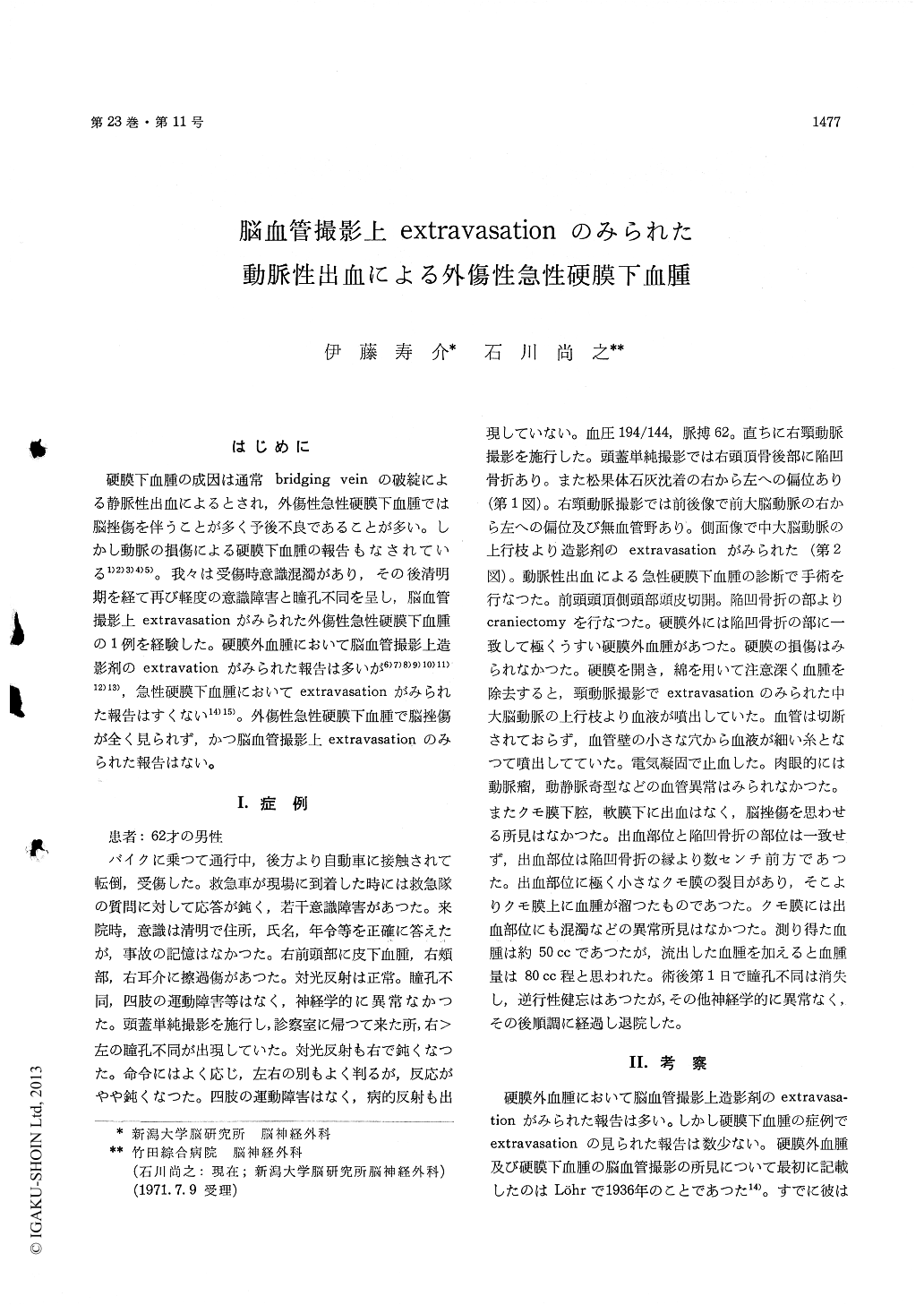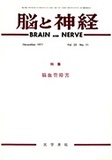Japanese
English
- 有料閲覧
- Abstract 文献概要
- 1ページ目 Look Inside
はじめに
硬膜下血腫の成因は通常bridging veinの破綻による静脈性出血によるとされ,外傷性急性硬膜下血腫では脳挫傷を伴うことが多く予後不良であることが多い。しかし動脈の損傷による硬膜下血腫の報告もなされている1)2)3)4)5)。我々は受傷時意識混濁があり,その後清明期を経て再び軽度の意識障害と瞳孔不同を呈し,脳血管撮影上extravasationがみられた外傷性急性硬膜下血腫の1例を経験した。硬膜外血腫において脳血管撮影上造影剤のextravationがみられた報告は多いが6)7)8)9)10)11)12)13),急性硬膜下血腫においてextravasationがみられた報告はすくない14)15)。外傷性急性硬膜下血腫で脳挫傷が全く見られず,かつ脳血管撮影上extravasatiopのみられた報告はない。
A 62-year-old male had head injury in a traffic accident. After initial disturbance of consciousness he became alert and well oriented. On returning from plain ¢kull film study he became somewhat dull and his right pupil was larger than the left. Light response was sluggish on the right. Right CAG revealed an avascular area and displacement of the anterior cerebral artery to the left in the A-P projection. An extravasation of contrast medium from an ascending branch of the middle cerebral artery was seen in the latral projection. Under diagnosis of acute subdural hematoma from arterial rupture surgery was performed. At opera-tion massive subdural clot was removed with extreme care. A tiny stream of blood was spurting out from the lateral wall of the ascending branch of the middle cerebral artery in to the field. This bleeding was controlled with one touch of electro-cautery. There was no visual evidence of an aneu-rysm or artriovenous malformation. Macroscopically subarachoid or subpial hemorrhage was not seen. The adjacent brain appeared normal. The patient made an uneventful recovery from this operation, and has remained well since.
Arteriograms of acute traumatic subdurall hema-toma in Niigata University Hospital and Takeda General Hospital were reviewed. There were 35 cases of acute traumatic subdural hematoma. An-giography was performed in 21 cases. In 3 cases angiographic evidence of extravasation of contrast medium was recognized. One case is presented above. Of remaining 2 cases extravasation of con-trast medium was round in shape and a false aneu-rysm was confirmed at operation in one case and in the other case any definite relation between extravasation and bleeding spot was failed to show at operation. Both cases were accompanied by severe cerebral contusion. Pathogenesis of acute traumatic subdural hematoma from arterial rupture without any cerebral contusion was discussed.
It is concluded that the possible causative mech-anism is rupture of a bridging artery or rupture of adhesion between the surface artery of the brain and the inner surface of the dura due to sudden movement of the head.

Copyright © 1971, Igaku-Shoin Ltd. All rights reserved.


